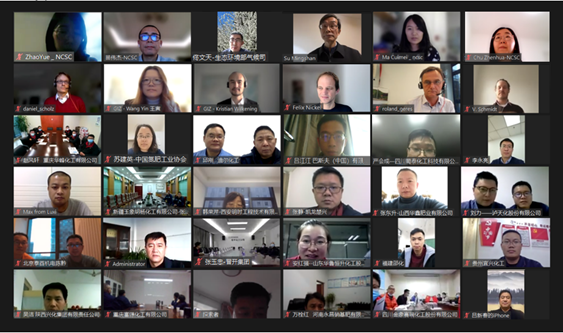July 20, 2018 – Lanzhou, a city which’s name is well known even outside of China due to its rich culinary culture, was the location of the fourth session of advanced trainings on the national ETS. From 17 to 18 July 2018, 25 participants from provincial governments and supporting agencies came together in order to learn, discuss and share their experiences related to ETS development in China. During the training, experts from Germany and China provided input presentations before the participants dove into discussions about common challenges in the process of establishing emissions trading in their regions. The training ended with a trading simulation, allowing the participants to better understand how an ETS works in practice. This training was, like other trainings before, organized by GIZ on behalf of the German Federal Ministry of the Environment, Nature Conservation and Nuclear Safety in cooperation with the Chinese National Center for Climate Change Strategy and International Cooperation (NCSC). After provinces in the south and the north-east were covered by earlier trainings, the training in Lanzhou was targeted at provinces from the north-west of China. Therefore, the participants came from Beijing, Henan, Shanxi, Shaanxi, Gansu, Ningxia as well as Xinjiang. The training started with opening remarks by Dr. ZHANG Xin, Director of NCSC, followed by a speech by Mr. XIAO Fulin, the DDG of Gansu DRC, which hosted this session of the training. The final introductory remarks were made by Mr. Kristian Wilkening, Project Director of GIZ. The first day was focused on the experiences made in the European Union during the 13 years the EU ETS is already running. For this purpose, Dr. Roland Geres, managing partner of the consultancy FutureCamp, held several presentations, covering central aspects of ETS development ranging from general ETS design to MRV and practical experiences from a business perspective. In Addition, Mr. BI Xinxin of NCSC gave some important insights in the current state of ETS development in China and Mr. SU Xudong from the Research Center for Eco-Environmental Sciences in Shanxi presented the progress that has been made as well as the challenges ETS development is facing there. Participants were then given the opportunity to work together in groups to identify the most important challenges they are facing in their daily work and central questions they would like to have answered during next day`s discussion. After the participants were familiarized with the lessons learned in the EU, the second day was focused on the situation in China, on current challenges and on practical experiences related to emission trading. In order to allow participants an understanding of ETS construction, Mr. ZHANG Xin gave a detailed presentation about the current state of ETS development in China and on the topics that are currently worked on. Afterwards, Dr. ZHOU Sheng of Tsinghua University presented the national cap setting and allowance allocation methods, before both experts, together with the German expert Dr. Geres, discussed questions raised on the day before as well as from the audience. The last part of the training was led by the China Beijing Environmental Exchange. They organized a simulation game of emission trading, which was both fun and allowed participants a better understanding of real-world trading and price-building mechanisms. At the end of this very successful training, the content participants received their certificates and left Lanzhou with a range of newly learned knowledge.

Industry-Related N2O Mitigation Closing Workshop
On 7 June 2023, the National Center for Climate Change Strategy and International Cooperation (NCSC) organised the closing workshop of one cooperation project on mitigation of industry related N2O. The cooperation is part of the project “Sino-German Cooperation on Emissions Trading Systems, Carbon Market Mechanisms, and Industry-related N2O Mitigation.”


